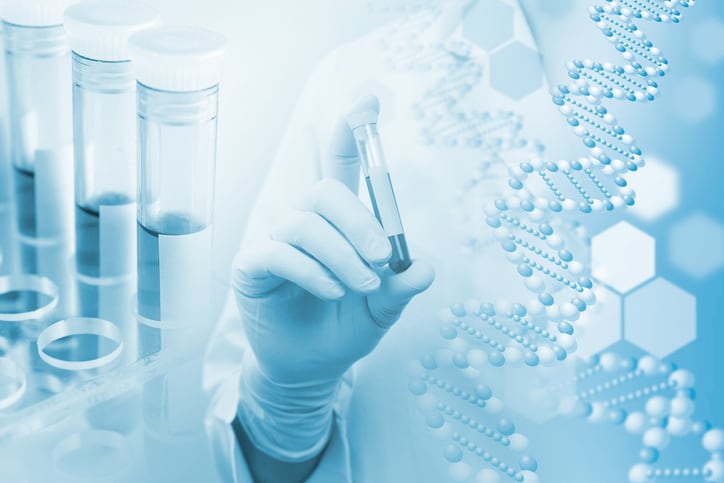Age-related molecular changes in blood could provide new insights into age-related disease biology, according to researchers mostly from Stanford University and the Institute for Aging Research at Albert Einstein College of Medicine.
The research, published in the journal Nature, presented a new way of reliably predicting people's ages using the protein levels in their blood, a process called proteomics.
Proteomics vs Epigenomics
“Proteomics is the study of ALL of the proteins the body can make, but in this context, we are looking at changes in relative amounts generating a ‘protein profile’ that may have predictive value,” explained Mark Miller, president of Kaiviti Consulting. “In this case of estimating biological age think of proteomics as a road sign that tells you how far you have travelled down the road. It may not necessarily reflect causation but it does help predict how close you are to the end of the journey.”
"By contrast epigenomics is the study of when genes are turned on or turned off. We do not have all of our genes pumping out products (proteins) constantly. These proteins are made on demand by activating the switch for the genes that code them. With disease, age and interventions (environmental, nutritional, microbiomic) the nature of the switches can be altered and from that the profile of protein products they generate is altered,” said Miller. “In other words, epigenomics is upstream from proteomics.”
The study
The research study evaluated 3,000 proteins in blood from 4,263 people aged 18 to 95. From there, they narrowed the focus to 1,379 proteins. Of that selection, 895 were generated in a profile that could predict the gender of the sample donor. Another subset of 373 proteins were highly predictive of age of the sample donor.
"By deep mining the aging plasma proteome, we identified undulating changes during the human lifespan," the researchers noted. "These changes were the result of clusters of proteins moving in distinct patterns, culminating in the emergence of three waves of aging."
The researchers were able to predict individuals’ ages within a range of three years most of the time. For those whose predicted age was substantially lower than their actual age, they actually turned out to be remarkably healthy for their age.
Another interesting finding was that those with stronger hand grips and better measured cognition were estimated to be younger than they actually were.
Three stages of aging
The researchers discovered that changes came in waves in the proteome in the fourth, seventh and eighth decades of life, reflecting distinct biological pathways and revealing differential associations with the genome and proteome of age-related diseases and phenotypic traits.
Physiological aging is not evenly paced, with the study showing three distinct inflection points in the human life cycle. The three points occur at ages 34, 60 and 78, distinct phases when the amount of different blood-borne proteins are exhibiting noticeable changes in supply.
The levels of proteins remain constant for a while and then tend to shift in three stages: young adulthood, late middle age and old age.
What makes the ages 34, 60 and 78 special?
“The profile changed at these times,” explained Miller. “I would think of it has hard numbers, but rather that there are stops along the way to the destination (obsolescence) that are major pit stops that reflect where you have come and how close you are to the end of the journey. In other words, there are clear signs that represent you have moved to the next level of aging, and that aging is not a blind continuum. It appears aging can progress in a stepwise manner where you reach a tipping point where enough proteins are altered in the profile to push you to that next stage of aging.”
Miller added that these road stops at ages 34, 60 and 78 do not appear to be classic stops in very healthy individuals, as they fail to display the shifts in protein profiles that are normally seen with aging.
"However, the 379 high target proteins cover many bases from metabolism, immunity, cardiovascular health etc.," he added.
Implications
“This new approach to the study of aging led to the identification of unexpected signatures and pathways that might offer potential targets for age-related diseases,” the authors said.
With clinical applications still be five to 10 years away, it may be too early to say if these findings can translate into actionable lifestyle changes.
According to Miller, a better predictive model may be to go broader than measuring proteins.
“Like the other newer ‘omics’ targets, proteomics provides new insight, but it is too early to say how predictive it will be. The technology is expense heavy but that will change and the more information we gather, then the more accurate an assessment will be. Nevertheless, the results are encouraging and most certainly insightful,” said Miller. “While it is still in the early days the results are revealing, but we need to examine proteomics together with other detailed, high intensity screening activities. To appreciate the whole picture, we need to assess genetics, epigenetics, microbiome profile and metabolomics where diet, metabolism and the microbiome intersect. From there we get a true picture of health, wellness, lifestyle and aging.”
Source: Nature
doi.org/10.1038/s41591-019-0673-2
“Undulating changes in human plasma proteome profiles across the lifespan”
Authors: B. Lehallier et al.




